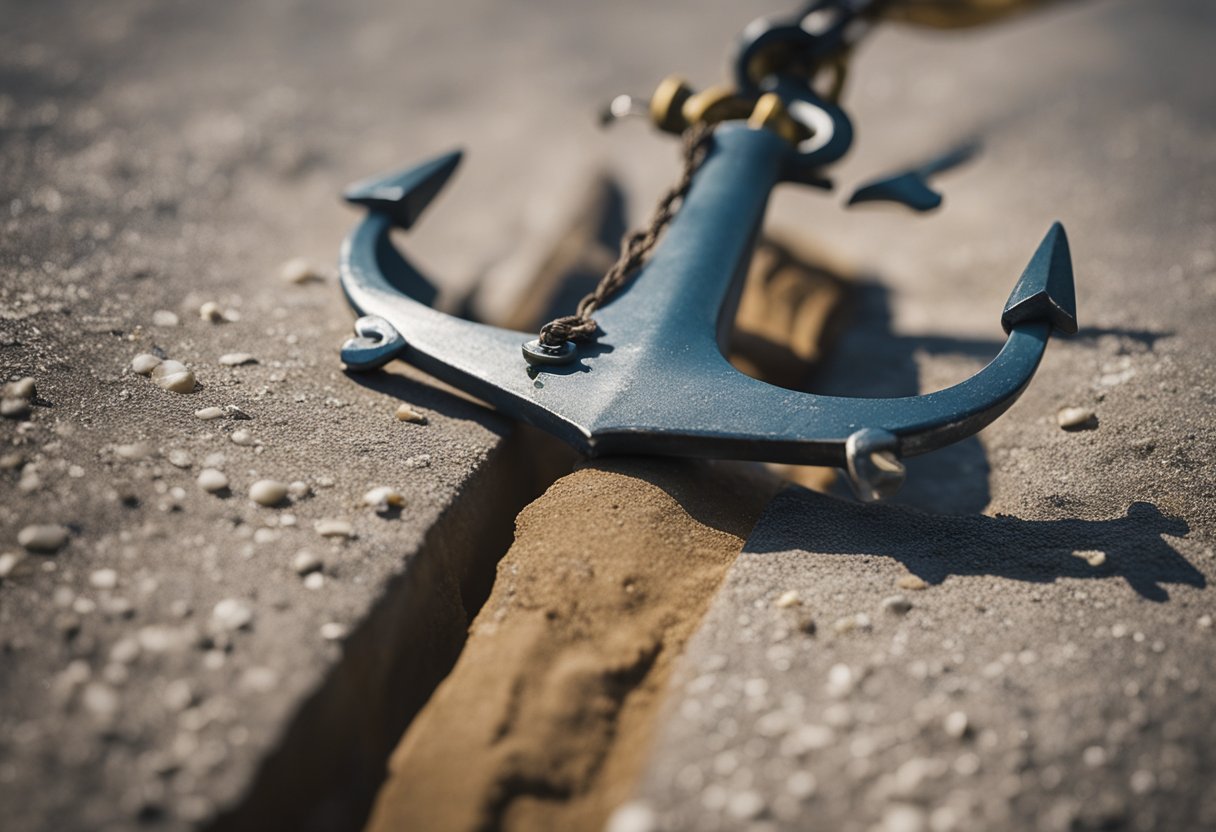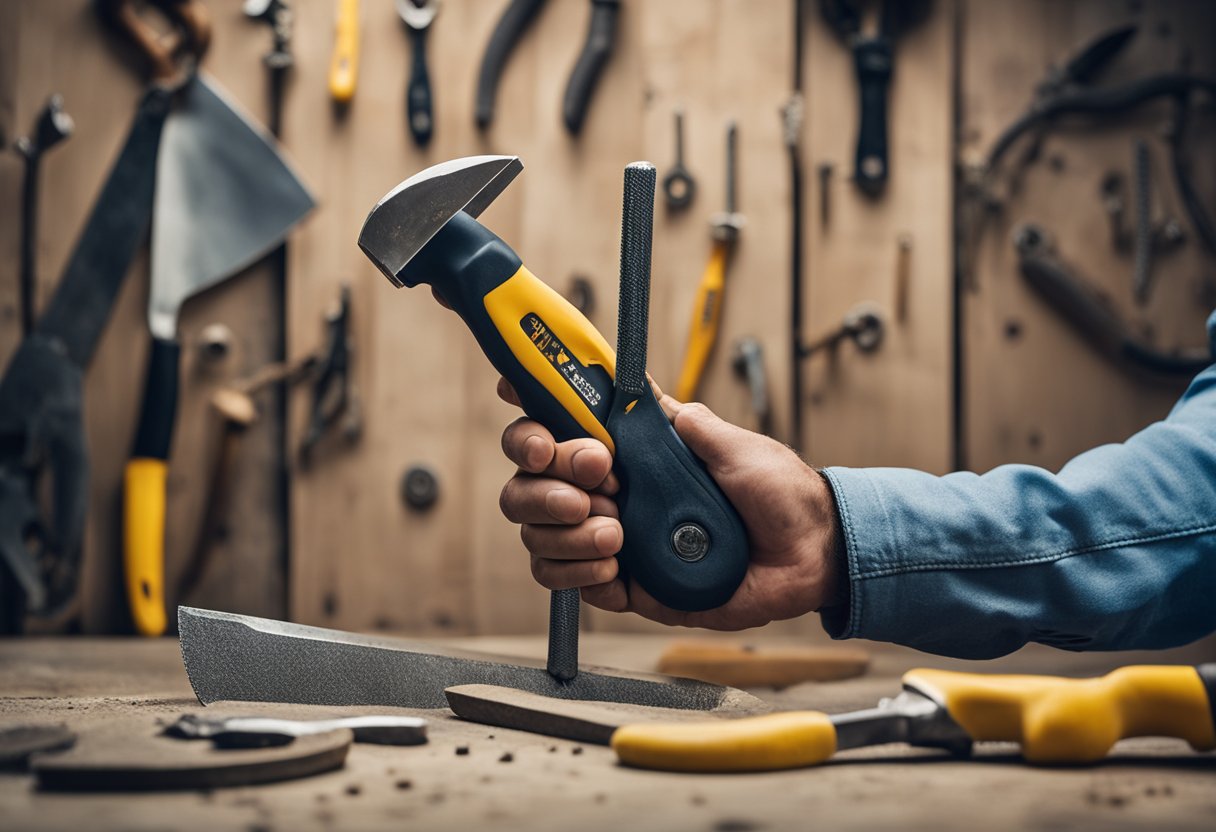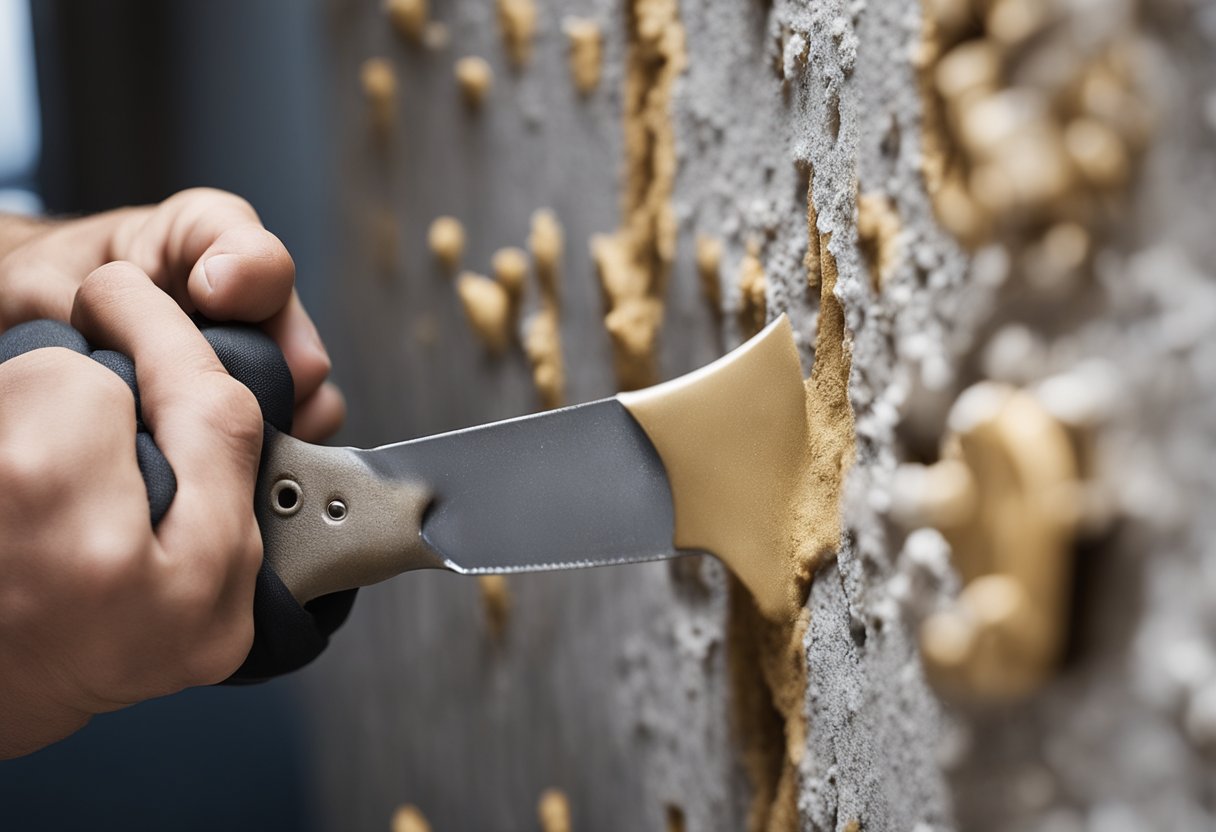Fixing wall anchor holes that are too big can be a daunting task, especially if you are not familiar with the process. In this article, I will guide you through the steps to fix wall anchor holes that are too big, and provide you with tips to prevent future issues.
Understanding the problem is the first step to fixing wall anchor holes that are too big. There are several reasons why wall anchor holes become too big, including the use of the wrong size anchor, over-tightening of the screw, or the wall material being too soft. Choosing the right tools and preparation steps are crucial to ensure a successful fix.
By following the step-by-step guide for common scenarios, you will be able to fix wall anchor holes that are too big with ease. Depending on the severity of the damage, you may need to use bigger anchors and toggle bolts, or adhesives and glues for extra stability. With the right tools and techniques, you can restore your wall to its original state and prevent future issues.
Key Takeaways
- Understanding the problem is crucial to fixing wall anchor holes that are too big
- Choosing the right tools and preparation steps can ensure a successful fix
- Following a step-by-step guide for common scenarios can help you fix wall anchor holes with ease.
Understanding the Problem
https://www.youtube.com/watch?v=9xSHpIQoI84&embed=true
When it comes to hanging things on the wall, wall anchors are a popular choice. Wall anchors come in different types and materials, such as plastic, metal, or nylon. They are designed to provide a secure hold for screws and other fasteners, especially in drywall or other hollow surfaces. However, sometimes the wall anchor holes can become too big, making it difficult to keep the anchor in place. This can be frustrating and can compromise the stability of the hanging object.
The problem of wall anchor holes that are too big can happen for several reasons. One of the most common reasons is when the hole is drilled too wide, either accidentally or because the drill bit is too big. Another reason is when the wall material is weak or brittle, causing the hole to widen or crumble over time. In some cases, the wall anchor itself can be faulty or damaged, causing it to slip or fall out of the hole.
Regardless of the cause, the problem of wall anchor holes that are too big can be solved with a few simple steps. One solution is to use a larger wall anchor that fits snugly in the hole. Another solution is to use a different type of wall anchor that is designed to work with larger holes, such as a toggle bolt or a molly bolt. If the hole is too big for any type of wall anchor, you may need to fill the hole with a patching compound or plaster and start over.
It is important to note that fixing wall anchor holes that are too big requires some basic tools and skills, such as a drill, a screwdriver, and some knowledge of wall materials and fasteners. If you are not comfortable with DIY projects or if the wall is made of a delicate material, such as plaster or ceramic, it may be best to consult a professional. In any case, with the right approach and tools, you can fix wall anchor holes that are too big and enjoy a secure and stable hanging object.
Choosing the Right Tools
When it comes to fixing wall anchor holes that are too big, choosing the right tools is crucial. Having the right equipment can make the process much easier and more efficient. Here are some tools that I recommend for the job:
Drill and Drill Bit
A drill is an essential tool for fixing wall anchor holes that are too big. Make sure to choose a drill bit that is the same size as the anchor you plan to use. If the hole is too big, you can use a larger drill bit but make sure that the new anchor will fit the larger hole.
Putty Knife
A putty knife is useful for scraping off any excess spackle or putty after you have filled the hole. It can also be used to apply spackle or putty to the hole.
Sandpaper
After the spackle or putty has dried, use sandpaper to smooth out the surface. This will ensure that the repaired area is level and flush with the rest of the wall.
Electric Drill
An electric drill can make the process of drilling and removing the old anchor much easier. If you don’t have an electric drill, a manual one will work as well.
Overall, having the right tools can make fixing wall anchor holes that are too big a breeze. Make sure to have these essential tools on hand before starting the repair process.
Preparation Steps
https://www.youtube.com/watch?v=Q_y_EU-ZwWI&embed=true
Before attempting to fix wall anchor holes that are too big, there are a few preparation steps that you should take to ensure that the repair process goes smoothly.
Firstly, you should clean the hole thoroughly. This will ensure that there is no dust, debris, or other materials that could interfere with the repair process. You can use a small brush or a vacuum cleaner to remove any loose materials from the hole.
After cleaning the hole, you should let it dry completely. This is important because any moisture or dampness in the hole can affect the adhesion of the repair material. You can use a hairdryer or leave the hole to air dry naturally.
Once the hole is clean and dry, you can proceed with the repair process. There are several ways to fix wall anchor holes that are too big, including using a larger anchor, filling the hole with spackle or drywall compound, or using a patch.
By following these preparation steps, you can ensure that your repair is successful and that the wall anchor hole is fixed securely.
Fixing the Wall Anchor Hole
https://www.youtube.com/watch?v=DPKTAUg-FzU&embed=true
If you’ve accidentally drilled a hole in your wall that’s too big for your drywall anchor, don’t worry. Fixing the hole is a simple process, and with the right tools and materials, you can have your wall looking as good as new in no time.
First, remove the anchor from the hole. If the hole is too big for the anchor, it’s likely that the anchor won’t be able to hold anything securely in place. Once the anchor is removed, you’ll be left with a hole that’s too big for the anchor.
Next, you’ll need to fill the hole with a patching material. Spackle or joint compound can be used to fill the hole. If the hole is particularly large, you may want to use hot mud joint compound, which is a thicker, more durable material that will hold up better over time.
Apply the patching material to the hole with a putty knife, making sure to fill the hole completely. Smooth out the surface of the patching material with the putty knife, and allow it to dry completely according to the manufacturer’s instructions.
Once the patching material is dry, sand it down with a fine-grit sandpaper until it’s smooth and even with the surrounding wall. Wipe away any dust with a damp cloth, and your wall is ready to be painted or decorated as desired.
In conclusion, fixing a wall anchor hole that’s too big is a simple process that can be done with just a few tools and materials. By following these steps, you can have your wall looking as good as new in no time.
Using Bigger Anchors and Toggle Bolts
https://www.youtube.com/watch?v=vjScnIzVJbs&embed=true
When the drilled hole in the wall is too big for the anchor, one solution is to use bigger anchors or toggle bolts. Bigger anchors can provide a stronger grip and support heavier items. Toggle bolts, on the other hand, are ideal for mounting heavy items on drywall without a stud.
To use bigger anchors, simply purchase anchors that are one size larger than the original ones. For example, if you were using 1/4-inch anchors, switch to 5/16-inch anchors. Once you have the new anchors, insert them into the enlarged hole and screw them in. Make sure to use screws that are compatible with the new anchors.
Toggle bolts are an excellent alternative to bigger anchors. They consist of a bolt with spring-loaded wings that expand behind the drywall when the bolt is inserted. This creates a secure hold that can support heavy items without a stud. To use toggle bolts, drill a hole that is the same size as the bolt, insert the bolt through the item you want to mount, and then insert the bolt into the hole. Once the bolt is in place, tighten it until the wings expand and create a secure hold.
When using either bigger anchors or toggle bolts, it is important to choose the right size for the job. Using anchors that are too small or bolts that are too weak can result in a failed installation and damage to the wall. Additionally, make sure to use wood screws that are compatible with the anchors or bolts you are using.
Overall, using bigger anchors or toggle bolts can be an effective solution for fixing wall anchor holes that are too big. By choosing the right size and type of anchor or bolt and following proper installation techniques, you can create a secure hold that will support your items and prevent damage to your walls.
Adhesives and Glues for Extra Stability
When it comes to fixing wall anchor holes that are too big, adhesives and glues can be a great solution for extra stability. They are easy to use and can provide a strong bond that will keep your anchor in place.
One popular adhesive for fixing wall anchor holes is Liquid Nails. This adhesive is specifically designed for use with construction materials like drywall, and it can provide a strong, permanent bond. To use Liquid Nails, simply apply a small amount to the back of your anchor, then insert it into the hole and hold it in place until the adhesive dries.
Another option is to use a standard construction adhesive. These adhesives are designed to bond a wide variety of materials together, including drywall and other construction materials. Simply apply a small amount to the back of your anchor, then insert it into the hole and hold it in place until the adhesive dries.
If you are looking for a more versatile adhesive, there are a number of options available. For example, epoxy adhesives are ideal for use with a wide variety of materials, including drywall. They provide a strong, permanent bond that can withstand a wide range of temperatures and environmental conditions.
Overall, when it comes to fixing wall anchor holes that are too big, adhesives and glues can be a great solution for extra stability. Whether you choose Liquid Nails, a standard construction adhesive, or an epoxy adhesive, you can be confident that your anchor will stay in place for years to come.
Step-by-Step Guide for Common Scenarios
https://www.youtube.com/watch?v=HNcWyCledL8&embed=true
When it comes to fixing wall anchor holes that are too big, there are a few common scenarios that you may encounter. Here is a step-by-step guide to help you fix these issues.
Scenario 1: Toilet Paper Holder or Towel Bar
If you need to fix a wall anchor hole that is too big for a toilet paper holder or towel bar, you will need to remove the old anchor and replace it with a new one. Here are the steps you should follow:
- Remove the old anchor by pulling it out of the wall.
- Choose a new anchor that is the same size as the old one.
- Insert the new anchor into the hole and tap it gently with a hammer until it is flush with the wall.
- Screw the toilet paper holder or towel bar back into place using the new anchor.
Scenario 2: Installing a Wall Anchor
If you are installing a wall anchor and the hole is too big, you can use a plastic wall anchor to fix the problem. Here are the steps you should follow:
- Choose a plastic wall anchor that is the right size for the screw you are using.
- Insert the plastic wall anchor into the hole and tap it gently with a hammer until it is flush with the wall.
- Screw the item you are installing into the plastic wall anchor.
Scenario 3: Large Hole in Drywall
If you have a large hole in your drywall and need to fix it, you can use a drywall patch kit. Here are the steps you should follow:
- Cut a piece of drywall that is slightly larger than the hole.
- Place the drywall patch over the hole and trace around it with a pencil.
- Cut along the pencil line with a drywall saw.
- Insert the drywall patch into the hole and secure it with drywall screws.
- Cover the seams with joint compound and let it dry.
- Sand the joint compound until it is smooth.
- Paint the patch to match the surrounding wall.
By following these steps, you can fix wall anchor holes that are too big and have your walls looking like new again.
Maintaining and Preventing Future Issues
After fixing the wall anchor holes that were too big, it is important to take steps to prevent future issues. Here are some tips to help maintain your walls and prevent future problems:
-
Use the right size of anchor: Before installing any anchor, make sure to choose the right size that matches the weight and size of the item you are hanging. Using a smaller anchor than required can lead to the same issue of holes being too big, while using a larger anchor can damage the wall.
-
Avoid over-tightening screws: When securing the anchor to the wall, avoid over-tightening the screws. This can cause the anchor to expand and create a larger hole in the wall.
-
Use a stud finder: If possible, try to hang heavy items on a stud to avoid using anchors altogether. A stud finder can help locate the studs in the wall.
-
Be cautious when drilling: When drilling into the wall, be cautious not to drill too deep or at an angle. This can cause the hole to be too big or misaligned.
-
Patch small holes immediately: If you notice a small hole in the wall, patch it immediately to prevent it from becoming a bigger issue in the future.
By following these tips, you can maintain your walls and prevent future issues with wall anchor holes.
Frequently Asked Questions
What are the best drywall anchors for heavy items?
When it comes to hanging heavy items on drywall, it is essential to use the right type of anchor. Some of the best drywall anchors for heavy items include toggle bolts, Molly bolts, and self-drilling anchors. These anchors are designed to distribute weight evenly and prevent the anchor from pulling out of the wall.
How can I fix a screw hole that is too big in a brick wall?
If you have drilled a screw hole that is too big in a brick wall, you can use a plastic anchor to fix the problem. Simply insert the anchor into the hole and then screw the screw into the anchor. The anchor will expand and create a tight fit in the hole, preventing the screw from pulling out.
Can drywall anchors be cut to size?
Yes, drywall anchors can be cut to size if they are too long for the thickness of the drywall. You can use a pair of pliers or wire cutters to trim the anchor to the desired length. However, it is essential to ensure that the cut end of the anchor is smooth and free of any sharp edges.
What is the best way to repair anchor holes in drywall for reuse?
If you want to reuse an anchor hole in drywall, the best way to repair it is to fill it with spackle or joint compound. Simply apply the spackle or joint compound to the hole and then smooth it out with a putty knife. Once the compound is dry, you can drill a new hole and insert a new anchor.
How do I patch a large hole in drywall?
To patch a large hole in drywall, you will need to cut a piece of drywall to fit the hole. Then, insert the piece of drywall into the hole and secure it with drywall screws. Next, apply joint compound to the seams and smooth it out with a putty knife. Once the compound is dry, sand it down and paint over it to match the surrounding area.
What are some alternatives to Wet N Fix for fixing wall anchor holes that are too big?
If you don’t have Wet N Fix on hand, there are several alternatives that you can use to fix wall anchor holes that are too big. These include toothpicks, wooden dowels, and plastic anchors. Simply insert the toothpicks or wooden dowels into the hole and then screw the screw into the wood. For plastic anchors, insert the anchor into the hole and then screw the screw into the anchor.

Hi, I’m Sal Muller of Tooltrip.com. My DIY experience led me to understand essential power tools for home projects. Tooltrip.com guides enthusiasts and professionals in choosing right tools for any job. I provide concise top tool reviews for easier, efficient DIY.






